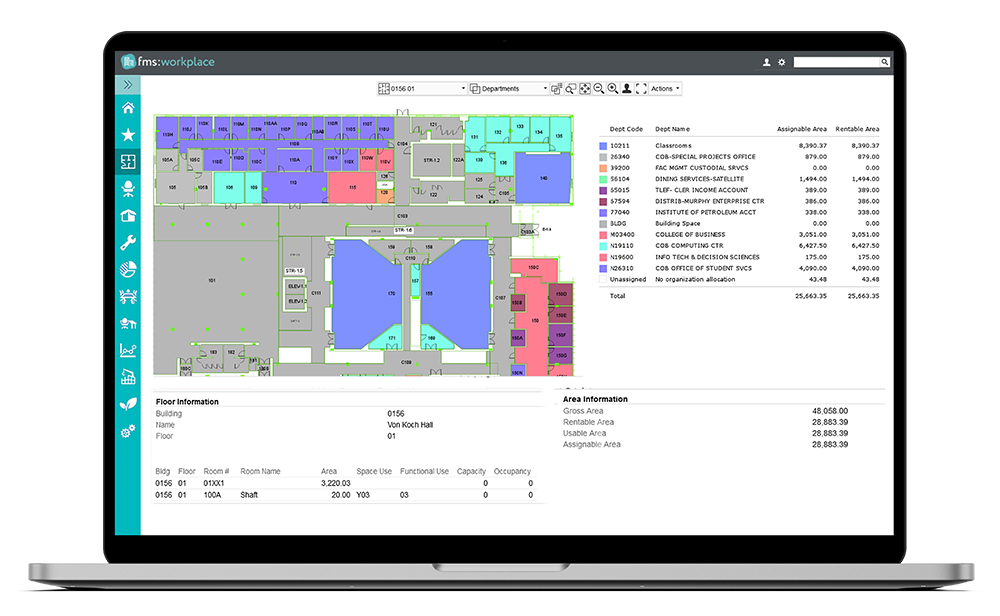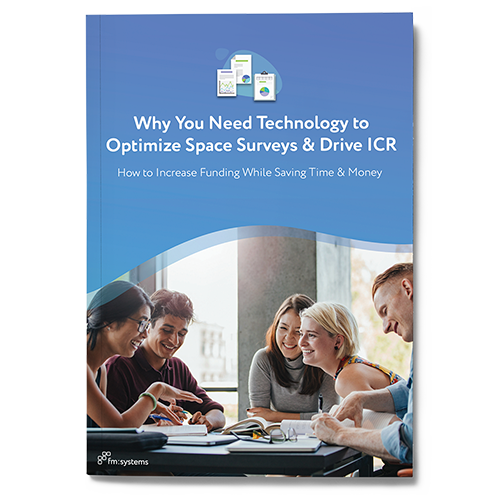The Customer
As a premier urban research university and the most diverse university in Michigan, Wayne State University (WSU) operates more than 130 facilities serving 6 colleges, 13 schools, and 270 program departments.
The Challenge
The Planning and Space Management group within the Facilities Planning and Management department is responsible for space and resource management, including master planning, annual and six-year capital planning, and deferred maintenance planning. The team also designates space assignments for WSU’s classrooms and labs, faculty offices, student housing and other facilities.
An outdated facility management system was hindering the visibility WSU needed in order to conduct facilities surveys and plan. Because it was difficult to get data into and out of the facility management system, people kept and updated data on their laptops, using ad hoc documents and spreadsheets. The lack of centralized data made it difficult to ascertain the most current information.

“We had a system that was limping along. It wasn’t efficient. It seemed like we had to be computer tech people to even put in a request to our vendor,” recalled Alan Berezik, Space Manager for WSU, noting it took up to a week for their vendor to acknowledge tech support requests. When hard questions came up, he had to export data and use other tools to find answers. “I really needed data quicker and reports faster than they could get them back to us.”
Their old facility management system didn’t share data easily, so disparate campus systems created data silos that prevented teams from sharing a unified view of data. The Higher Education Survey team had to use a mixture of an outdated IWMS space module’s exports and the grant management system to manage the survey process. Lacking synchronization with the building automation system, maintenance techs in the field sometimes worked off 10-year-old drawings with incorrect room numbers.
“I’ve already seen the benefit. I’ve added new fields to a report. I’ve scheduled the report to be emailed every Friday at 4:30. The ease of what I can do now is miles ahead of what we were able to do before. You guys undersold your system!”
– Alan Berezik, Space Manager / CAFM / CAD
The Solution
WSU decided to obtain a more modern planning and facility management solution that would make facilities data more accessible, more up-to-date and accurate, and more usable. They wanted to partner with a more responsive vendor who could make configurations quickly and easily, as they were needed to meet WSU’s needs.
After careful evaluation, WSU selected FM:Systems as its business partner because the company designed facility management software for the specific needs of universities. The development and technical support teams had expertise in higher education and a focus on delivering continuous improvement through easy upgrades.
Implementing & Utilizing FMS:Workplace During COVID-19
As implementation of their new FMS:Workplace and Higher Education Survey solution began, the COVID-19 pandemic shut down the university. Because FM:Systems software is cloud-based, implementation continued while campus was closed. The FM:Systems team hit milestones while the WSU team simultaneously concentrated on crafting its return-to-campus strategy.
“I was surprised how easily our old data went into the new system. That was a big plus. Just getting our drawings in there saved me a lot of time,” said Berezik. He sent floor plans to FM:Systems to be loaded in the system and found it “refreshing” to see it completed just a couple of hours later. “COVID-19 didn’t help, because I haven’t been at the office much, but I have still been able to update records. We were able to implement everything and get it live.”
Wayne State University uses these solutions:

Space Management

Higher Education Survey
What’s Next?
With the multi-wave implementation of FMS:Workplace completed, WSU has already started using their new facility management system to gain better insights into space.
Easier & More Frequent Campus Space Surveys
Before, it was a struggle to gather the information needed to complete Facilities & Administrative (F&A) audits. With the Higher Education Survey solution, the space planning group anticipates it will conduct multiple space surveys throughout the year.

Centralized Data Creating a Smoother Workflow
New internal policies reinforce the requirement to centralize all data collection into the facilities management system. Before it often took Berezik a week to track down who had information he needed. Today, he’s got reliable data at his fingertips about every room on each floor of each building. As WSU takes advantage of more functionality, they also plan to collect occupancy data about people and equipment.
“Now we have a system that’s space driven and asset driven and real estate driven. And one of the benefits is now, when we do the survey, all that data should be up to date. It shouldn’t just be a three year or a five-year survey,” said Berezik. “We’re going to audit 100% of the space every year. And then 20 percent of that space will be field-verified every year within a five-year cycle.” F&A audits will take much less time and effort in the future and will yield defensible data that will enable WSU to maximize ICR rates.

Improved Visibility Into Campus Space
Improved visibility and reporting will help WSU identify areas to reduce costs and optimize their use of space. Berezik will be able to use more detailed cost and occupancy data to evaluate existing leases and owned buildings as well as future needs for additional space. “When a project comes up, we can generate a report, we can add the data in there and now we have a central place to store it,” said Berezik. “I can check real estate leases, I can find out addresses, I can look at assets. I could never do all that before.”
Berezik believes the space surveys and occupancy data will give the space planning group an advantage should another pandemic or other emergency arise. “If we ever have to shut down for any reason, we’ll have this information right at our fingertips instead of filed away.”
“The investment has been money well spent and we’re only a couple months down the road. Management is already looking at additional modules to centralize and streamline our data collection process and provide accurate reports.”
– Alan Berezik, Space Manager / CAFM / CAD

Make your annual space survey process faster, easier and more accurate
Download our guide on how your university space team can simplify reporting, improve ICR rates and gain insights for more informed, strategic decision-making.









